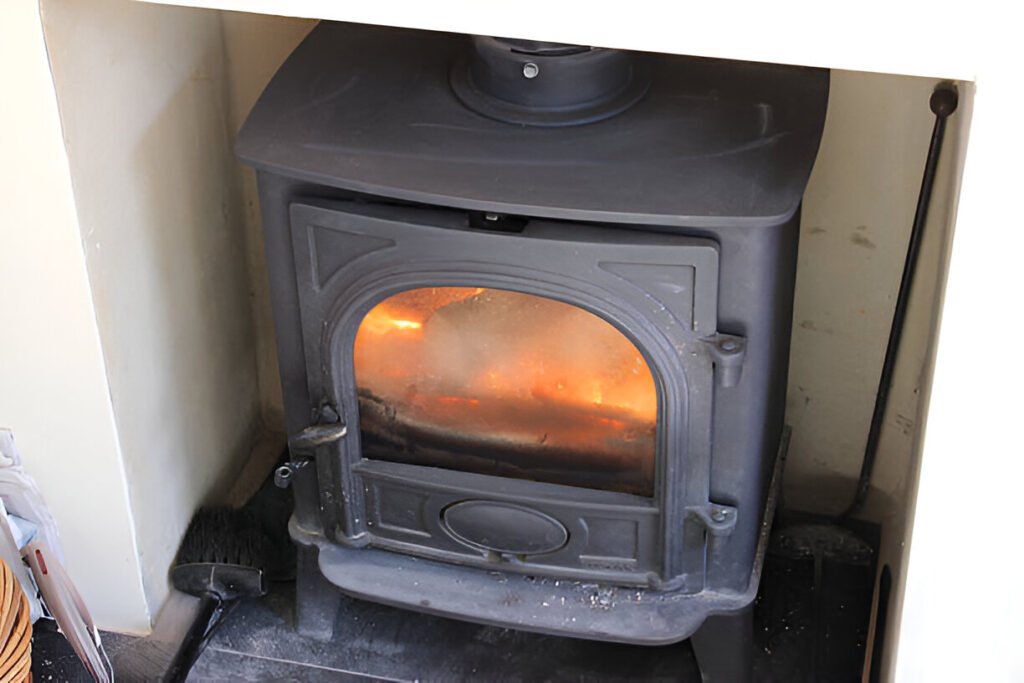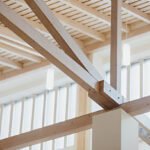Building your own wood-burning stove is an incredibly rewarding DIY project that offers numerous benefits. Not only can you save a significant amount of money compared to purchasing a pre-made unit, but you also gain the satisfaction of constructing something with your own hands. Additionally, a homemade wood stove allows you to customize the design to perfectly suit your needs and living space.
One of the primary advantages of a DIY wood stove is cost savings. High-quality, commercially available wood stoves can cost thousands of dollars, making them a substantial investment. By building your own, you can drastically reduce the overall cost, especially if you’re able to source materials at a discounted rate or repurpose existing materials.
Another benefit of a homemade wood stove is the sense of self-sufficiency it provides. In an age where we often rely on mass-produced goods, there’s something deeply gratifying about creating a functional and essential item like a wood stove from scratch. This project allows you to develop valuable skills and gain a deeper understanding of how a wood stove operates.
Furthermore, a DIY wood stove offers the opportunity to tailor the design to your specific requirements. Whether you need a larger or smaller stove, prefer a particular aesthetic, or have unique space constraints, you can craft a wood stove that perfectly fits your needs. This level of customization is rarely achievable with off-the-shelf models.
By the end of this project, you’ll have a fully functional, efficient, and safe wood-burning stove that not only provides warmth and ambiance to your living space but also serves as a testament to your DIY skills and ingenuity.
Planning and Design Considerations
Before you start building your wood burning heater, it’s crucial to plan and consider several design factors that will impact the stove’s performance, efficiency, and safety.
First, you’ll need to source the necessary materials. The most common options are steel, cast iron, or a combination of brick and mortar. Steel is a cost-effective and durable choice, while cast iron offers superior heat retention. Brick and mortar stoves have a classic aesthetic but require more labor-intensive construction.
In addition to materials, you’ll need basic tools like a welder, angle grinder, drill, and standard hand tools. Depending on your design, you may also require a metal brake for bending steel, a refractory cement mixer, and protective gear like welding gloves and a respirator mask.
The size of your wood stove is a crucial consideration, as it determines the heating capacity and fuel consumption. A larger stove will generate more heat but require more wood. Generally, a stove with a firebox between 2-3 cubic feet is suitable for heating spaces up to 2,000 square feet. However, consider your climate, insulation levels, and desired temperature when sizing your stove.
Proper airflow and efficient combustion are essential for a well-functioning wood stove. Design features like adjustable air inlets, baffles, and a secondary combustion chamber can significantly improve efficiency and reduce emissions. Ensure your stove has adequate draft and a properly sized flue or chimney to promote airflow.
Safety should be a top priority when building a wood stove. Incorporate clearances from combustible materials, a sturdy base or hearth, and a non-combustible wall or floor protector. Install smoke and carbon monoxide detectors, and have a fire extinguisher on hand. Familiarize yourself with proper operation and maintenance procedures to prevent hazards like chimney fires or carbon monoxide poisoning.
How To Build A Wood Burning Heater
The stove body is the core structure that will contain the fire and radiate heat into your living space. There are several material options to consider, each with their own pros and cons in terms of heat output, durability, and ease of construction.
Steel Stove Body
Steel is an excellent choice for a DIY wood stove body due to its strength, heat resistance, and relatively low cost. You can use steel plate, pipes, or a combination to construct the main firebox and outer shell.
- Cut steel plates to size for the top, bottom, sides, front and back using an angle grinder or plasma cutter. Precise measurements are key.
- Weld or bolt the pieces together, ensuring tight seams to contain the fire safely. Include an opening for the door and air inlets.
- For the firebox interior, use thicker gauge steel plate or refractory concrete to protect against extreme temperatures.
- Add heating channels, baffles, and an ash lip below the door using additional steel components.
Cast Iron Stove Body
Cast iron is a very dense material that absorbs and radiates heat extremely well. While more expensive, a cast iron stove can provide incredible heat output.
- Source cast iron stove components like the sides, top plate, door and legs from a supplier or salvage yard.
- Use furnace cement or refractory mortar to assemble the components, forming the main firebox chamber.
- Drill air inlet holes through the cast iron and install a pipe or damper for airflow control.
- Construct an outer steel jacket around the cast iron core, leaving an airspace for heat circulation.
Brick and Mortar Stove Body
For a classic masonry heater, you can construct the entire stove body using high-temperature refractory bricks and mortar.
- Lay a solid brick base and floor, leaving a rectangular firebox area in the center.
- Build up the sidewalls in a running bond pattern, creating air channels within the brick core.
- Form arches or a barrel vault over the firebox area using specialized refractory bricks.
- Leave openings for the door, ash removal, and air inlets at strategic points.
- Use high-heat stove mortar or refractory concrete to join all components solidly.
No matter which material you choose, be sure to include an appropriately-sized door for loading wood and regulating airflow. Precise construction following combustion air principles is crucial for optimal safety and efficiency.
Installing the Flue and Chimney
Proper installation of the flue and chimney system is crucial for safe and efficient operation of your wood burning stove. The chimney height and dimensions play a key role in creating the necessary draft to draw smoke up and out of your home.
Determining Proper Chimney Height
As a general rule, the chimney should extend at least 3 feet above the highest point where it passes through the roof, and at least 2 feet higher than any portion of the building within 10 feet. This ensures adequate draft and prevents downdrafts caused by wind or nearby structures. The total chimney height should be between 15-33 feet tall for optimal performance.
Chimney Dimensions
The interior dimensions of the chimney flue should match the flue collar size on your wood stove. A properly sized flue ensures the right amount of draft without being too restrictive. Common flue sizes range from 6-8 inches in diameter for residential wood stoves. Larger stoves may require a rectangular flue.
Connecting to the Stove Body
The chimney must be securely connected to the stove’s flue collar using strict safety standards. Use a compatible stove pipe with adequate clearances to combustibles per the manufacturer’s specifications. Secure all joints and connections with the appropriate fasteners and sealants rated for wood stove use.
Codes and Safety Requirements
Be sure to follow all local building codes and safety requirements for wood stove and chimney installations. Codes will specify minimum clearances to combustibles, proper chimney construction materials, and necessary safety components like wall protection and spark arrestors. Having your plans reviewed and the installation inspected is highly recommended.
Taking the time to properly size and install your chimney system will ensure safe venting of smoke and gases for efficient, code-compliant operation of your DIY wood burning stove.
Adding Components and Finishing Touches
Once the main stove body and chimney are constructed, it’s time to add some key internal components to optimize airflow, heat output, and ease of operation.
One crucial component is the baffle, a metal plate or series of plates installed near the top of the firebox. The baffle helps redirect the hot gases and smoke, increasing heat transfer to the stove body before exiting through the flue. Baffles can be made from steel or cast iron and should have an air gap between the plates and the stove top to prevent excessive temperatures. Proper baffle installation improves efficiency and prevents creosote buildup.
Another important addition is an air inlet control, usually a cast iron or steel slider that regulates the amount of combustion air entering the firebox. This allows you to control the burn rate and heat output. The inlet should be located near the bottom of the stove’s door or side panel.
Including an ash grate or drop box in the firebox floor makes removing built-up ash easier. The grate allows air to circulate under the fire while letting ash fall into a removable tray below. A well-designed ash system prevents air restriction and simplifies cleaning.
Finally, you can customize your wood stove’s appearance with decorative options like a soapstone or ceramic exterior facade. These provide a rustic look while also absorbing and radiating more heat. Ornate cast iron door designs and metal embellishments add style as well. Get creative with colors, textures and materials that complement your home’s decor.
Operating Your Wood Stove
One of the most important aspects of owning a wood stove is learning how to properly operate it. This involves choosing the right wood fuel, starting and tending the fire correctly, adjusting airflow, and achieving an efficient, clean burn.
Best Wood Fuels
The type of wood you burn can significantly impact the performance and efficiency of your wood stove. Hardwoods like oak, maple, and birch are ideal as they burn hotter and longer than softwoods. Look for well-seasoned wood that has been split and dried for at least 6-12 months, with a moisture content below 20%. Avoid green or wet wood, as it can lead to excessive smoke, creosote buildup, and reduced efficiency.
Starting the Fire
Start by placing a few small pieces of dry kindling or a commercial fire starter in the stove’s firebox. Crumple some newspaper on top and light it. Once the kindling is burning well, add a few small logs, leaving space between them for airflow. Gradually increase the size of the logs as the fire grows stronger.
Tending the Fire
Maintain a consistent temperature by adding logs as needed. Use a poker to distribute the burning wood and coals evenly. Adjust the air intake vents to control the burn rate and heat output. Generally, open the vents wider for a hotter fire and close them for a slower, more efficient burn.
Achieving Efficient Burn
For optimal efficiency and minimal emissions, aim for a hot, bright fire with active flames and minimal smoke. This indicates a complete combustion of the wood. Avoid smoldering fires, as they produce more smoke and creosote buildup. Regularly check the chimney for visible smoke and adjust the air intake accordingly.
Removing Ashes
Periodically remove ashes from the firebox to maintain proper airflow. Allow the ashes to cool completely before disposal. Consider composting the ashes or using them as a soil amendment for your garden.
By following these operating guidelines, you’ll not only maximize the efficiency and heat output of your wood stove but also promote a safer, cleaner burn for your home.
Maintenance and Troubleshooting
Proper maintenance of your DIY wood stove is crucial for ensuring safe and efficient operation over many years. Regular cleaning and inspections will help prevent hazardous creosote buildup in the chimney and identify any potential issues before they become major problems.
Cleaning the Chimney and Stove
Creosote, a flammable tar-like substance, will accumulate over time inside the chimney and stove from burning wood. Too much buildup increases the risk of a dangerous chimney fire. Inspect and clean the chimney and stovepipe at least once a year, more frequently if you use the stove often.
Use a stiff chimney brush attached to rigid fiberglass rods to scrub away creosote deposits. Work from the top down, ensuring you reach all areas of the flue. Shovel out any debris and creosote that fell into the firebox. Consider hiring a professional chimney sweep periodically for a thorough cleaning.
Handling Ashes
Allow ashes to cool completely in the stove before disposal. Use a metal ash shovel and store ashes in a sealed, fireproof metal container away from combustibles. Never discard hot ashes in a cardboard box, plastic bin, or directly into a dumpster, as they can hold heat for days and potentially cause a fire.
Troubleshooting Poor Draft
A weak draft reduces the stove’s efficiency and can lead to smoke spillage into your home. Check that the chimney meets the proper height requirements and that there are no obstructions like bird nests blocking airflow. Open a nearby window or exterior door briefly to increase draft. Use dry, seasoned wood for hotter fires that produce better draft.
If issues persist, you may need to modify the stove design, extend the chimney height, or install special components to improve airflow. Consult professional resources if you cannot resolve chronic draft problems.
Safety Precautions
Safety should be the top priority when building and operating a wood-burning stove. Proper clearances from combustible materials like wood framing, insulation, and drywall must be maintained. Most building codes require at least 36 inches of clearance on all sides and above the stove. Use non-combustible materials like brick, stone, or metal heat shields if you cannot achieve proper clearances.
Fire prevention is also crucial. Never operate the stove with the door open, as burning embers could escape and ignite nearby surfaces. Regularly remove ashes into a sealed, fireproof metal container. Install smoke and carbon monoxide detectors on every floor and test them monthly. Keep a multipurpose fire extinguisher easily accessible near the stove area.
When the stove is in use, ensure proper ventilation to allow enough combustion air and prevent buildup of toxic gases like carbon monoxide. Never burn trash, plastics, or chemically treated woods that could release harmful fumes. Exercise caution when adding logs, stoking the fire, and removing hot ashes. Use proper fire tools and wear protective gear like heat-resistant gloves.
Local Codes and Permitting
Before embarking on your DIY wood stove project, it’s crucial to research and comply with all applicable local codes and regulations. Building codes and permitting requirements vary significantly from one area to the next, so it’s essential to check with your municipal authorities.
In many regions, installing a wood-burning appliance requires obtaining a permit from your local fire department or building inspection office. The permitting process ensures that your wood stove meets safety standards and is installed correctly to minimize fire hazards and air pollution.
When applying for a permit, you may need to provide detailed plans or drawings of your proposed wood stove design, including specifications on the chimney height, clearances from combustible materials, and the stove’s overall construction. An inspector will likely need to approve your plans and conduct a site visit before issuing the permit.
Even if your locality doesn’t require a permit for DIY wood stoves, it’s still advisable to familiarize yourself with relevant building codes and fire safety regulations. These codes typically cover aspects such as proper clearances from walls and ceilings, approved materials and construction methods, and requirements for smoke detectors and fire extinguishers.
Failure to comply with local codes and permitting requirements can result in hefty fines or even orders to dismantle your wood stove. By doing your due diligence upfront, you can ensure your DIY project is legal, safe, and up to code, providing you with peace of mind and a reliable heating source for years to come.
Conclusion
With some basic tools, materials, and this step-by-step guide, you now have the knowledge to build your very own efficient and safe wood-burning heater. By taking the DIY approach, you’ve saved significant costs over a prefabricated stove while gaining a rewarding sense of self-sufficiency and customization.
As you wrap up your project, take pride in the craftsmanship and effort invested in constructing this durable heating solution for your home. With proper operation, maintenance, and respect for safety protocols, your homemade wood stove will provide reliable warmth and ambiance for years to come.
To further your education on wood heating, explore online forums, local clubs, and publications dedicated to this traditional art. Many resources exist for mastering efficient wood stove operation, creative stove design, and sustainable forestry practices. The journey of wood heat has only just begun.
Enjoy the unbeatable radiant warmth and charm that your custom-built stove brings to your living space. You’ve joined the ranks of skilled DIYers while forging a lasting connection to this historic heating method. Congratulations on a job well done!

Tonja Nichols Ray is a creative author and DIY enthusiast who shares her passion for repurposing old items on social media. On her Instagram account @tonja.nichols, she showcases beautiful transformations of everyday objects into unique and functional pieces.
As a contributor to the website scrapsafari.com, Tonja writes detailed guides and tutorials, helping her readers discover the joys of breathing new life into vintage and discarded materials. With an eye for design and a knack for crafting, she inspires her followers to approach home decor and personal projects from a sustainable, eco-friendly perspective.


